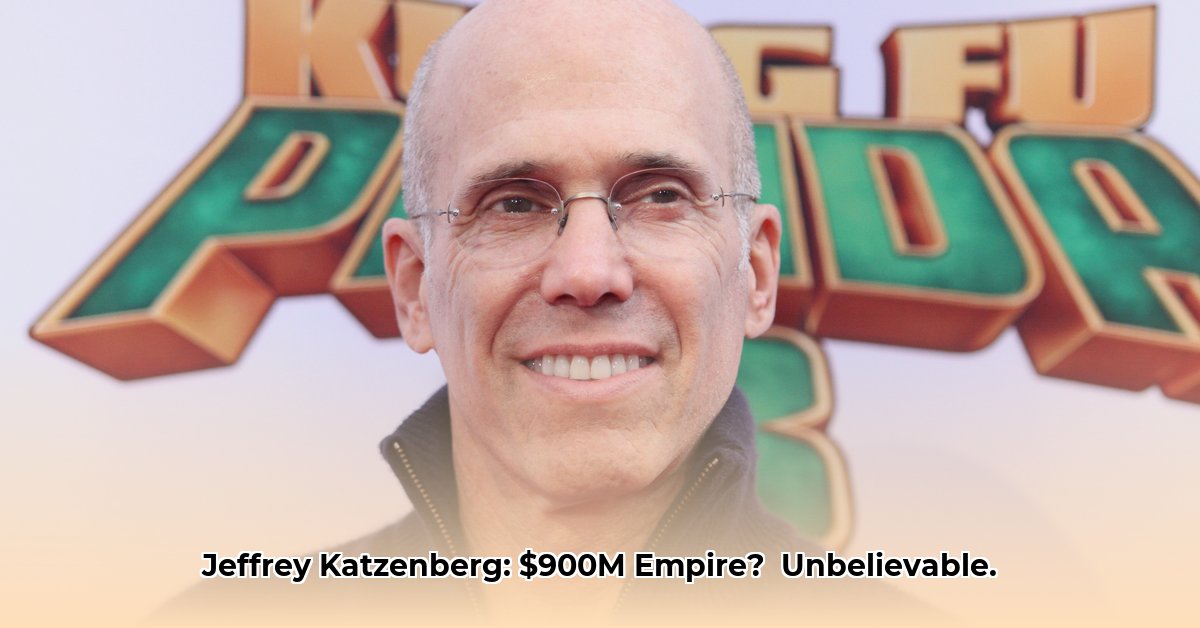
From Disney's Animation Renaissance to DreamWorks' Blockbuster Success: A Media Mogul's Journey
Jeffrey Katzenberg. The name resonates with animation classics and Hollywood deal-making prowess. But how did this entertainment titan amass an estimated $900 million fortune? It wasn't simply luck; it was a meticulously crafted strategy built on calculated risks, shrewd business acumen, and a deep understanding of the entertainment landscape. This exploration delves into the key elements that propelled Katzenberg from Disney executive to a mega-successful media mogul, illuminating the blueprint of his enduring empire.
A Foundation in Animation: Disney's Golden Age and the Birth of a Visionary
Katzenberg's career trajectory began amidst the animation revolution at Disney. His instrumental role in the development of iconic films like The Little Mermaid and Beauty and the Beast wasn't just about producing movies; it was about shaping cultural phenomena. These box-office behemoths generated billions, establishing Katzenberg's reputation and providing an invaluable network of industry contacts—a crucial asset that money couldn't buy. This period laid the groundwork for his future endeavors, providing him with the experience and connections necessary for his subsequent triumphs. How did this intensive training ground fundamentally shape his investment strategies later on? It instilled in him a keen understanding of audience engagement and the power of storytelling—essential elements in his future success.
DreamWorks' Bold Gamble: A Partnership Forged in Innovation
But Katzenberg's ambition extended beyond Disney's walls. His co-founding of DreamWorks Animation with Steven Spielberg and David Geffen was a high-stakes gamble, a calculated risk reflecting his innate confidence and vision. This bold move resulted in the creation of a powerhouse animation studio which produced countless hit films and significantly amplified his net worth. Ultimately, the sale of DreamWorks Animation to Comcast represented a substantial financial victory, cementing his place among Hollywood's elite. This strategic alliance highlights Katzenberg's understanding of the power of synergistic partnerships—leveraging the collective expertise and resources of industry giants to create a force far greater than the sum of its parts.
Beyond the Silver Screen: Diversification and Calculated Risks
Katzenberg's financial success isn't solely attributed to his animation empire. His investments extend beyond film, showcasing a sophisticated approach to portfolio diversification. Real estate, for instance, comprises a substantial portion of his assets, suggesting a belief in tangible assets' long-term appreciation, offering stability against the inherent volatility of the entertainment industry. His foray into venture capital, while marked by some notable setbacks (like the short-lived Quibi streaming service), underscores his calculated willingness to take risks. The potential for substantial returns clearly outweighed the possibility of failure. This diversification across asset classes—film, real estate, venture capital—is a key element of his successful wealth accumulation. It's a strategy providing a buffer against potential losses in any single investment sector.
Deconstructing Katzenberg's Investment Strategies: A Multi-Faceted Approach
Katzenberg's wealth isn't accidental; it's a direct result of carefully executed strategies. Let's examine the key components:
Studio Leadership and Creative Vision: Katzenberg's leadership wasn't purely administrative; he actively shaped creative direction, ensuring box-office success. This translates directly into massive revenue generation from blockbuster films and lucrative studio acquisitions.
Masterful Strategic Partnerships: Collaborations with Spielberg and Geffen were about more than just combining resources; they leveraged each other's strengths and networks—significantly enhancing deal-making and opening doors to unprecedented opportunities.
Long-Term Real Estate Investments: His real estate holdings demonstrate a commitment to acquiring appreciating assets, providing financial stability in a fluctuating market.
Calculated Venture Capital Risks: While acknowledging setbacks like Quibi, this strategy demonstrates a willingness to invest in high-potential ventures, even if risky, for potentially large gains.
Lessons from a Hollywood Titan: Building Your Own Empire
Katzenberg’s journey offers valuable lessons for aspiring entrepreneurs:
Strategic Partnerships: Collaborations that complement skills and expand networks are transformative; never underestimate the power of synergy.
Calculated Risks: High-reward ventures necessitate risk; detailed research and understanding potential downsides are crucial.
Diversification: Diversifying investments across asset classes protects against unforeseen events—don't keep all your eggs in one basket.
Adaptability: The entertainment industry is dynamic; staying ahead of the curve requires constant adaptation and seizing opportunities.
Katzenberg's $900 million net worth isn't simply about numbers; it's a reflection of his business acumen, creative vision, and unwavering drive. His story serves as a compelling case study, demonstrating how careful planning, strategic partnerships, and calculated risk-taking can lead to extraordinary success. The journey highlights the transformative power of foresight and diversification in cultivating a lasting, substantial empire.